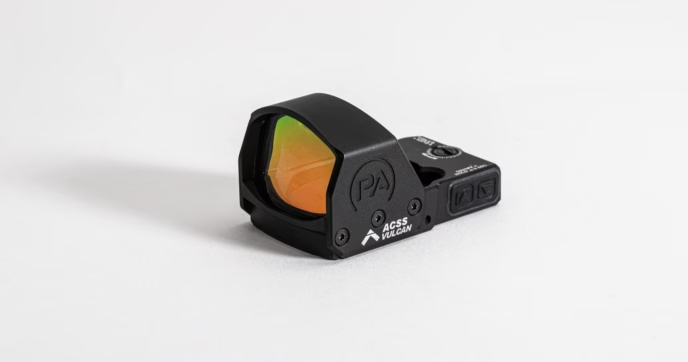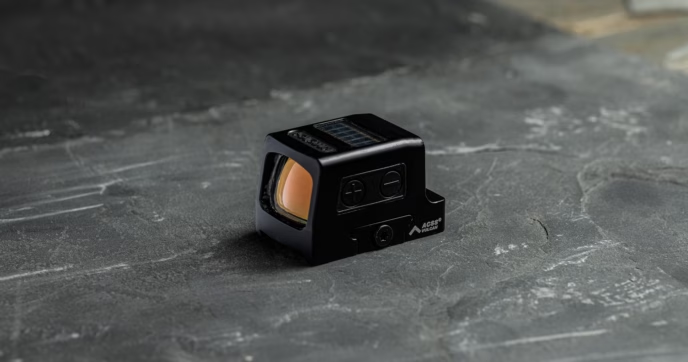Pistol red dot sights aren’t just the future, they’re the present. The majority of pistols are now available from the factory with some variety of optic cut, and there’s scarcely a red dot manufacturer in existence that doesn’t offer at least one model of pistol reflex sight.
As with rifles before them, pistols are not-so-slowly doing away with iron sights as a primary aiming system and moving to more modern optics and all the benefits they provide. The drawback, though, is the inevitable added bulk of the red dot housing. No red dot is ever going to be as small and sleek as a set of iron sights, and while the increased size may not be much of a detriment on a duty pistol or home-defense gun, on a carry pistol, it can be an issue.
When it comes to choosing a red dot for a concealed carry pistol, size is an important factor. Concealment is paramount, and so anything that inhibits concealability demands careful consideration.
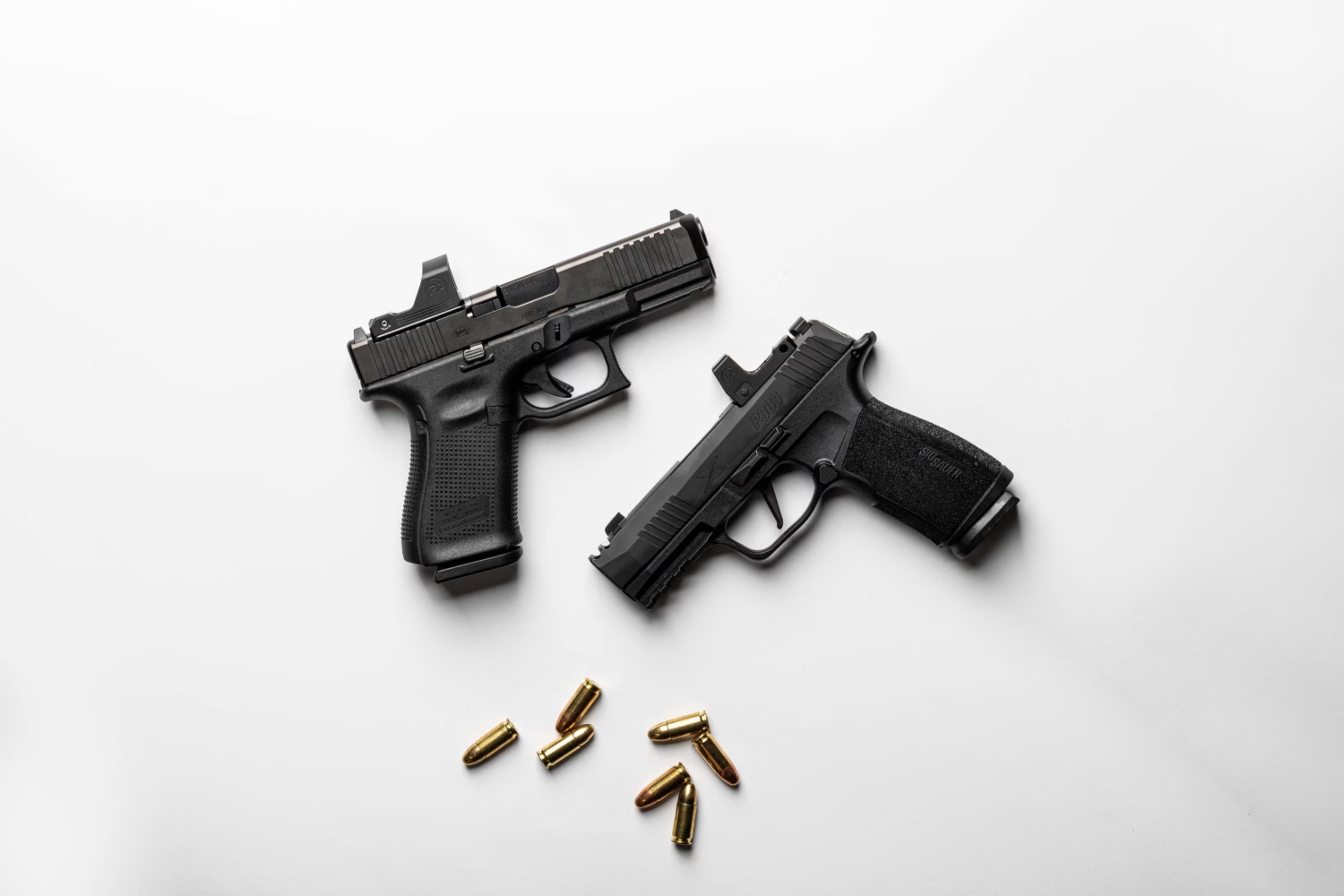
Red Dots For Concealed Carry: Pros and Cons
The benefits of a reflex sight are well established. The inherent simplicity of aiming with a red dot offers benefits to speed, accuracy, and performance under adverse conditions, such as low light or stress.
Aiming with a red dot is simply easier than with iron sights. Users need only place the dot on the target and pull the trigger; there are no posts to align and no need to focus on anything other than what you’re firing at. This makes red dots particularly well-suited to defensive firearms. When under stress, whether from a legitimate threat or just the pressure of a timer, the fewer variables involved in taking a shot, the better. Red dots simplify the aiming process, letting you engage targets faster and more precisely.
The target-focused nature of red dots is often undervalued, as well. Unlike iron sights, which require you to divert your focus from your target for optimal accuracy, a red dot allows you to keep your focus entirely on what you’re aiming at, rather than what you’re aiming with. In a high-stress situation, keeping your focus on your target may be inevitable, so a sighting system that complements that is a significant advantage.
Red dots also benefit from ideal low-light performance. They’re self-illuminating and require no outside light to be visible, making them perfect for use in dimly lit environments. Many are even capable of automatically adapting their brightness to the level of ambient light around them, allowing them to quickly adapt if you suddenly turn on your weaponlight.
Despite the many advantages of a pistol red dot, though, they are not without their drawbacks. Chief among these is size; reflex sights are available in a range of different sizes and formats, but all are going to add a decent amount of bulk to your slide.
Depending on how you carry and your firearm’s overall size to begin with, that may be only a minor detriment to concealability, or a significant one. A small red dot like the RMRcc is barely going to be noticeable on a full-size service pistol, but an enclosed red dot like the Holosun 509T is going to be much more prominent on a 9mm compact.
Red dots also add additional potential failure points to your firearm. While iron sights can and do break or become shifted off zero, it’s an incredibly rare occurrence. Red dots, while typically highly durable and reliable, do have a higher chance of failure, owing primarily to their greater complexity.
There are simply more things that can go wrong. The battery can die. The internal electronics could become damaged or corroded. The lenses can crack, become fogged due to a failed seal, or be obstructed by lint, mud, or other debris. Many of these issues can be avoided or ameliorated by regular maintenance, but the fact remains that iron sights are more reliable, even without maintenance.
On balance, though, most users will find that the benefits of a reflex sight far outweigh the negatives. For the price of a bit of retraining and marginally increased regular maintenance, you can have faster target acquisition, smaller group sizes, and more reliable performance under stress or poor light conditions.
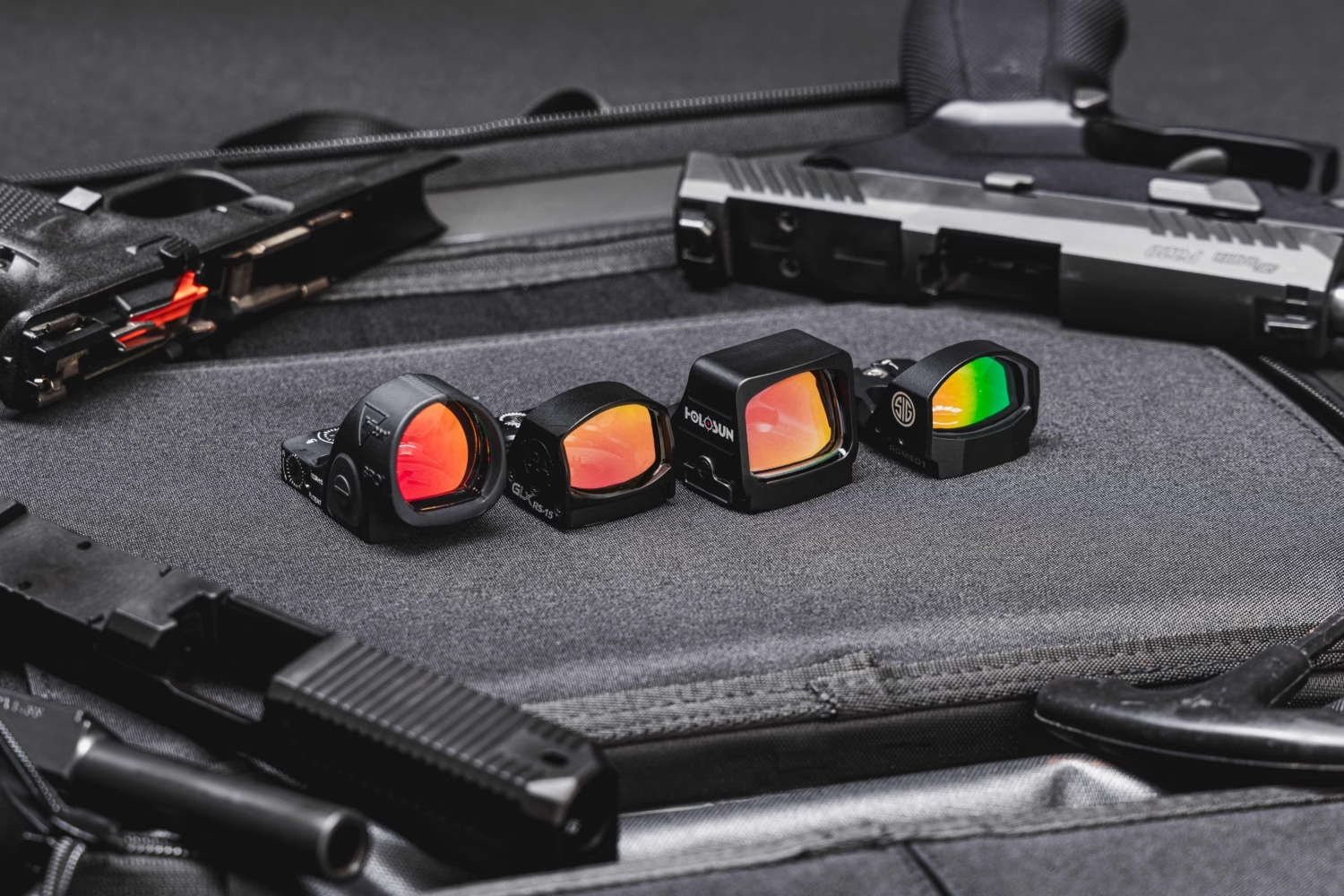
Choosing A Red Dot: Criteria
Once you decide to add a red dot to your pistol, you have to decide on which one. The market is positively glutted with options these days, ranging from simple models for a couple of hundred dollars to high-end, high-performing sights that can cost as much as the pistols they ride on. There’s no one best model for everyone, but there are a handful of criteria every user should consider when making their selection.
Size
For a concealed carry pistol, size is going to be of paramount importance. The bigger your pistol is—including any attachments you have added—the more difficult it is going to be to conceal. Optics play a particularly large role in this dynamic due to their location at the rear of the firearm on top of the slide, which tends to be one of the most common places to cause printing.
Other accessories, such as weaponlights, can be quite sizeable without affecting concealability in any significant way. They do, however, often have much more detrimental effects on comfort.
When it comes to size, the primary consideration you’ll need to take into account is height, but this can be a little more challenging than it seems at first glance. While you would think that a sight with a shorter overall height would be less likely to cause printing, the reality is less straightforward. It’s not the height of the optic that matters, but the total height added to your firearm.
This means that other factors like adapter plate thickness and optic cut depth also have to be taken into account. A taller optic that can mount directly to your slide may actually add less overall bulk to your firearm than a shorter one that requires an adapter plate.
A good example of this principle at work can be found in the Primary Arms® PLx® HTX-1™ red dot sight. Despite the large viewing window, the optic adds rather little total size to the firearm it is installed on, owing to its innovative Modular Chassis System, which allows it to sit exceptionally low.
You may also want to take into account the width of the red dot, particularly if you plan to carry a thinner pistol such as a 1911 or a micro compact like the Sig Sauer P365 or S&W Shield. Many red dots will be substantially thicker than the slides on these firearms, and while they may be compatible with the use of an adapter plate, they will substantially increase the width of the overall profile of your pistol. If part of your reason for choosing such a gun is the ease of concealment provided by the thin profile, a substantially wider optic will be counterproductive.
Enclosed vs Open Emitter
An enclosed emitter red dot is one in which the emitter—the part of the optic that generates the beam of light that will create the reticle on the lens—is entirely sealed within the housing. This makes it impossible for anything to intrude between the emitter and the lens, obstructing the beam of light.
Open emitter optics are by far the more common and are simpler designs that use an emitter built into the rear of the housing and a lens at the front. They do not have any substantial material on the sides and top of the space between the emitter and lens, leaving it open.
We offer a full breakdown of the pros and cons of each design in our article on open vs closed emitter red dots, so we won’t rehash all of that here. If you’re looking for a low-profile sight, though, open emitter optics are inarguably the more compact option.
Open emitter sights, by their very nature, are lower-profile than enclosed designs. They have less material and are overall smaller since they don’t need to seal in the space between the emitter and lens.
They also tend to print less owing to their less boxy shape. Enclosed emitter sights all tend to be shaped more or less like a cube, which creates a sharp corner at the rear edges of the sight—one of the most common areas firearms tend to print when carried strongside. Open emitter sights, on the other hand, have most of their bulk farther forward around the lens, which usually sits close to belt level. This creates a softer drape of the fabric of your shirt, making it significantly less noticeable than a sharp corner.
Users who carry in an appendix position, though, may not notice any difference in printing between the two sights, as the slide of the pistols typically sits flat against the body.
Reticle
While concealability matters, it isn’t everything. A good concealed carry firearm needs to be optimized for performance just as much as concealment, which is why it’s important to take the reticle into account when selecting an optic.
Not all reticles are created equal. Smaller reticles are generally more precise, but may be difficult to acquire, particularly under stress or in disadvantageous lighting conditions. Large, broad red dots are extremely easy to locate in any environment, but give up a certain amount of precision.
Many users find a dot in the neighborhood of 3-4 MOA to be the right balance of speed and precision. It’s large enough to be easily acquired, but still covers only an inch and a half of the target at 50 meters, which is more precise than even the average full-sized pistol is capable of being.
Another option is to go with a more sophisticated reticle. Many manufacturers offer ring and dot style reticles, which use a small center aiming dot—often 1 MOA—surrounded by a larger circle, typically somewhere around 32 MOA. This combination purports to offer the best of both worlds, with the center aiming point providing exceptional precision and the outer ring drawing the eye for fast acquisition. The outer ring can also be used for gross aiming at very close ranges.
Yet a third alternative is the ACSS® Vulcan® system, which uses a similar design, but reimagined to address a much different problem. The 4 MOA center dot offers the aforementioned balance of speed and precision, but is augmented by a massive 250 MOA outer ring. While the sight is properly aligned, the outer ring sits outside the window of the optic and is not visible. However, when misaligned, a portion of the dashed circle becomes visible, providing an intuitive indicator of how the dot is misaligned, allowing for almost instantaneous correction.
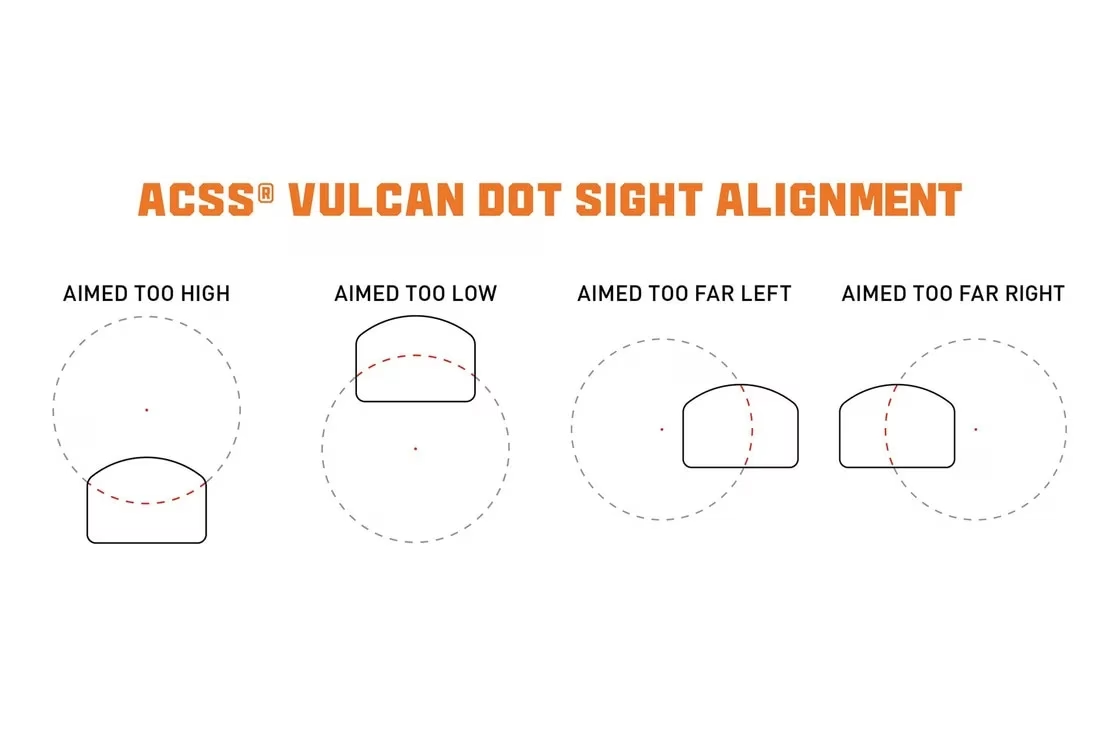
This provides a valuable training tool to help users learn to present their pistol properly aligned faster, but also allows for rapid, precise alignment corrections under high stress, such as during defensive or competitive use.
Auto-Adjustment
Auto-adjusting brightness is a feature offered by some manufacturers that allows a red dot dial to adjust its brightness up or down to match the level of ambient light in the environment. This ensures that your dot is never too bright, causing it to bloom and obstruct the target, nor too dim, which would make it difficult to acquire. Depending on the circumstances, this adjustment can happen instantaneously or may take a few seconds.
This feature is exceptionally convenient for target and recreational marksmanship, but can also be quite valuable for a carry pistol, which is likely to be on your belt through a range of different environments. Even just getting out of your car and walking into a store can involve a range of different ambient light levels, each of which is best served by a different level of brightness from your dot.
Auto-adjustment is not without its drawbacks, though. It can take a few seconds to function, and in a defensive application, a few seconds can be critical. It also has an inherent weakness of being based on the level of ambient light around you, rather than around your target. This means that if you are standing in an area that is significantly dimmer than the location of your target, your dot may adjust its brightness to be too low to be visible against the bright backdrop of your target. For this reason, some users prefer more traditional manually adjusted brightness settings for defensive optics.
Mounting Footprint
Things like reticle and auto-adjustment are largely up to personal preference, and there’s really no wrong choice. While you may prefer one feature or another, the odds of a too-large reticle or lack of auto-adjustment in your optic making the difference between a hit and a miss are vanishingly small.
Mounting footprint, on the other hand, is a factor that you have to get right. You must choose an optic that is compatible with your firearm’s slide in order to be able to mount it.
Many optic-ready handguns utilize a system of adapter plates that allows for compatibility with a wide (but not infinite) range of optics. GLOCK’s Modular Optic System, or MOS, is perhaps the best-known version of this.
Other guns are directly milled for compatibility with a single optic. In this case, you’ll need to select an optic with a footprint that matches the optic cut on your pistol. Some pistols with specific optic cuts can still utilize adapter plates, but you’ll want to make sure such an adapter plate is available before making a purchase.
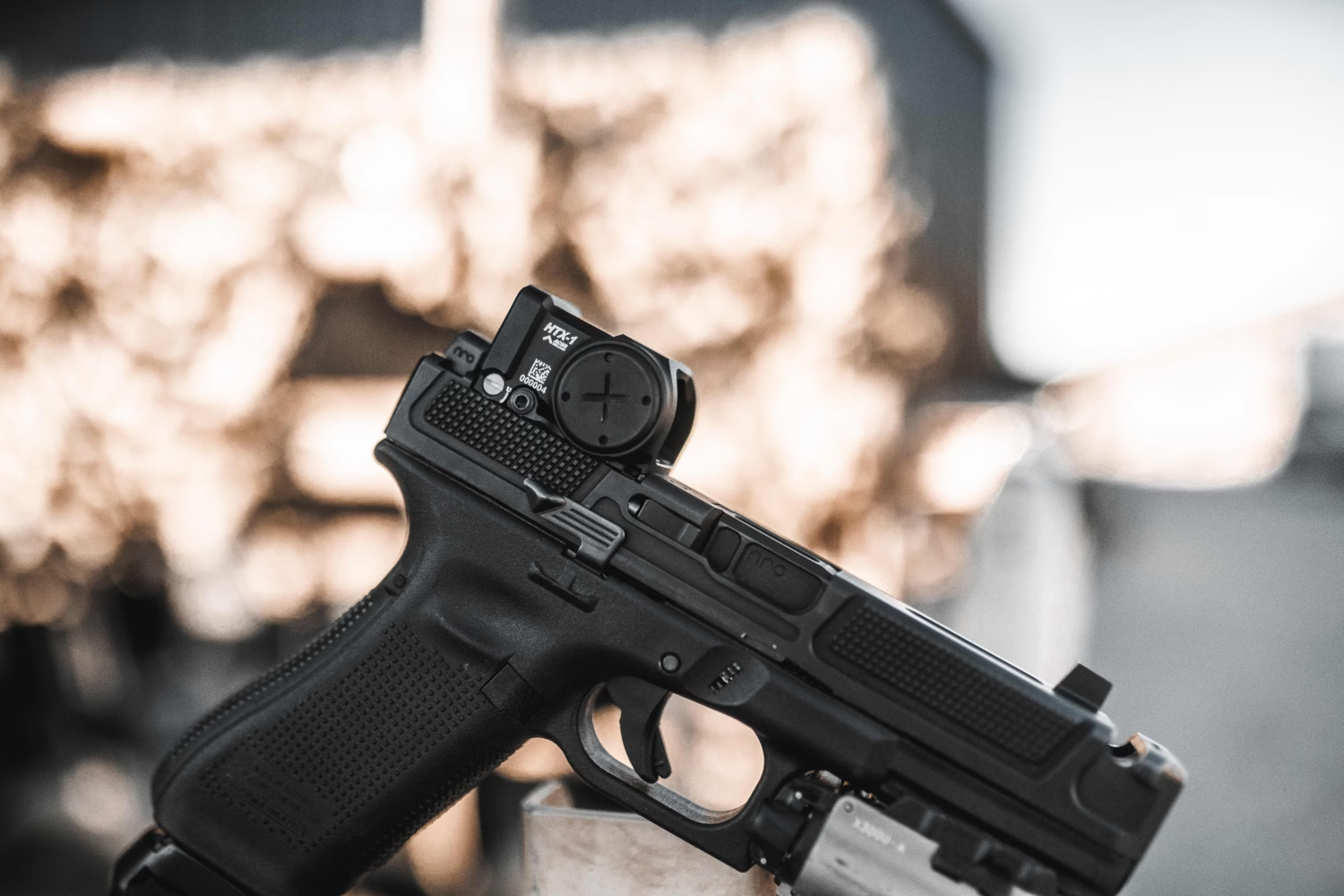
Popular Models
Today’s market is simply brimming with high-quality optics at a variety of price points. There’s no single best pistol red dot, but there are always going to be some that are more popular than others. Below, we’ll take a look at some of the most-loved options available.
Trijicon RMR/RMRcc
The Trijicon RMR is perhaps the oldest and most well-known mini reflex sight on the market. It was one of the first red dots available that was small enough to be mounted to a pistol, and remains today one of the toughest and most durable open emitter optics ever made.
Besides a long history and a reputation for invincibility, the RMR is often prized for the sheer diversity of options available in its lineup. These sights can be had in a variety of different colors and finishes, with or without auto-adjusting brightness, and with reticles in different sizes, shapes, and colors. Trijicon even offers a version that is battery-free, instead deriving its illumination from tritium and fiber optics, much like their venerable ACOG optics.
The RMRCC is an updated version of the RMR shrunk down for modern slim and micro compact guns. It offers many of the same features as the RMR—including the exceptional durability on which Trijicon built their reputation—but with a narrower design and different mounting footprint.
Holosun 507C/K
One of Holosun’s most popular models, the 507C X2 is positively loaded with features. It’s an open-emitter design that is equipped with Holosun’s Multiple Reticle System, which allows users to select between a 2 MOA dot, 32 MOA circle, or both with just a few button clicks.
Auto-adjustment capability is built into the sight, but can be deactivated by users who prefer to adjust their brightness manually. The 507C also features motion-sensing technology that deactivates the sight after five minutes of inactivity, then reactivates it upon sensing movement, helping to extend the longevity of your battery. Should your battery still manage to die, the 507C even has a solar backup built in.
With 50,000 hours of battery life, IP67 water resistance, and night vision compatibility, the 507C is one of the most feature-rich optics available at its price point.
As with the RMR and RMRcc, the Holosun 507K X2 is essentially a smaller version of the 507C for more compact pistols, but with a few important distinctions. The 507K shares most of the same feature set, including the Multiple Reticle System and motion-sensing technology, but it does not offer the solar backup feature.
It does, however, have a small rear sight notch built into the housing, which is particularly valuable for micro compact 9mm pistols that do not have the ability to mount both an optic and a rear sight together.
Primary Arms HTX-1
The Primary Arms PLx® HTX-1 is a state-of-the-art enclosed pistol reflex sight. The aforementioned chassis system allows it to adapt to fit nearly any optic footprint while maintaining an extremely low centerline, eliminating the need for any aftermarket adapter plate. This extremely low stance makes it perfect for those who want the benefits of an enclosed emitter for concealed carry, but without the additional bulk that typically comes with them.
The HTX-1 also packs an impressive range of modern features, including an optional ACSS Vulcan Dot reticle, Autolive® motion-sensing technology, and night vision compatibility. A single CR2032 battery will provide roughly 20,000 hours of battery life, while the 7075 aluminum housing ensures shock and water resistance, meaning the HTX-1 is fully capable of weathering even the most demanding operational environments.
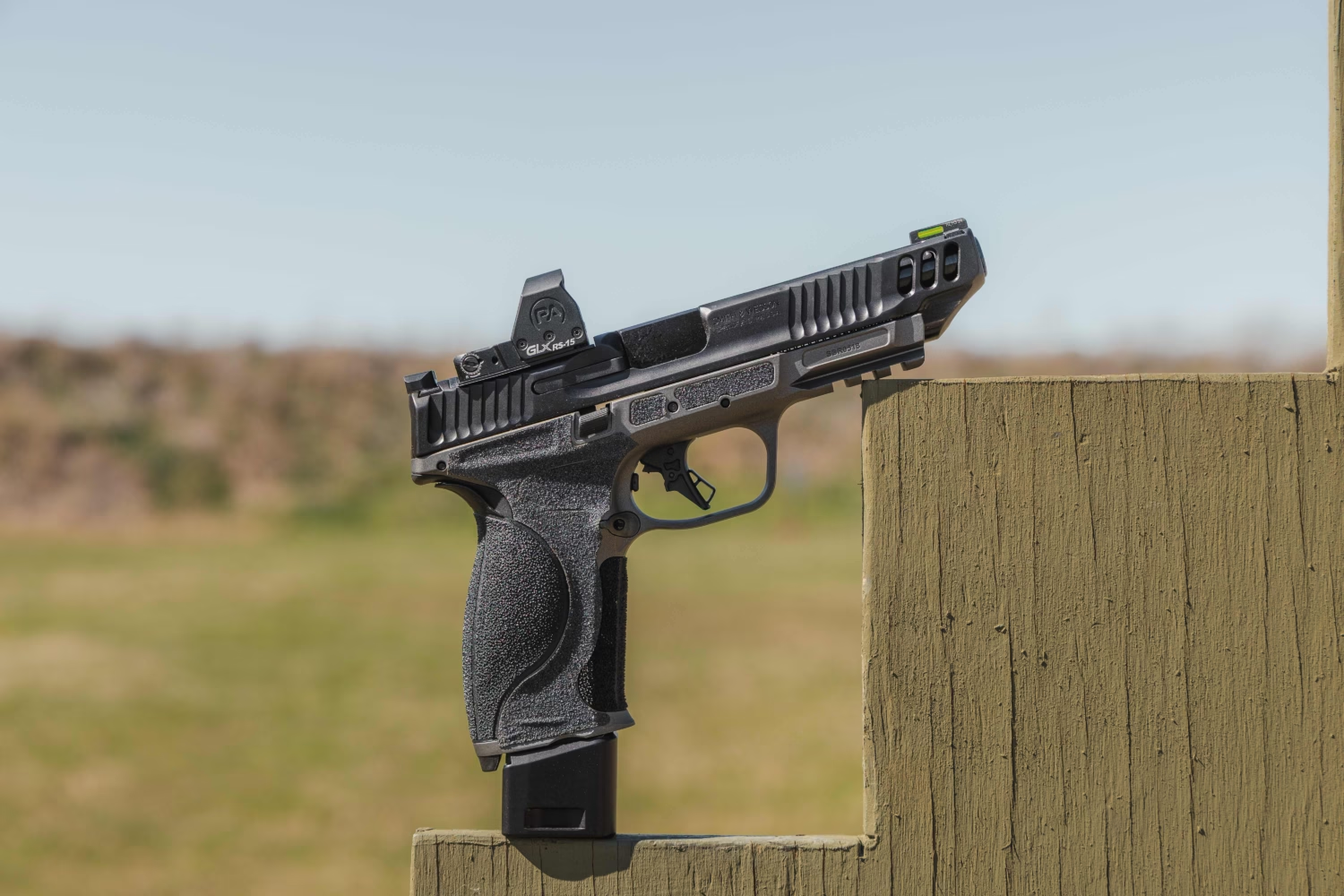
Conclusion
A good red dot sight is worth its weight in gold on a concealed carry pistol. The benefits of simple, intuitive aiming, a target-focused approach, and exceptional low-light performance are hard to ignore. While the added bulk can be a detriment to concealment, opting for a high-performing, low-profile optic can minimize the drawbacks while still providing much of the same benefits as a larger dot.
